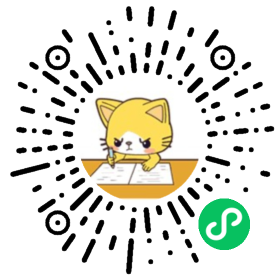【多选题】
社会主义初级阶段论___
A. 揭示了当代中国的历史方位
B. 建设中国特色社会主义的总依据
C. 是对马克思主义关于社会主义发展阶段理论的重大发展和重大突破
D. 是对我国实际的最好概括
查看试卷,进入试卷练习

微信扫一扫,开始刷题

答案
ABCD
解析
暂无解析
相关试题
【多选题】
邓小平南方谈话中提出的“三个有利于”标准是___
A. 是否有利于发展社会主义社会的生产力
B. 是否有利于增强社会主义国家的综合国力
C. 是否有利于提高人民的生活水平
D. 是否有利于改革开放
【多选题】
社会主义市场经济理论的要点有___
A. 计划经济和市场经济不是划分社会制度的标志
B. 计划和市场都是经济手段,对经济活动的调节各有优势和长处
C. 市场经济作为资源配置的一种方式本身不具有制度属性,可以和不同的社会制度结合
D. 坚持社会主义制度与市场经济的结合,是社会主义市场经济的特色所在
【多选题】
“和平统一、一国两制”构想的基本内容主要有___
A. 坚持一个中国,这是“和平统一、一国两制”的核心,是发展两岸关系和实现和平统一的基础
B. 两制并存,在祖国统一的前提下,国家的主体部分实行社会主义制度,同时在台湾、香港、澳门保持原有的社会制度和生活方式长期不变
C. 高度自治,祖国完全统一后,台湾、香港、澳门作为特别行政区,享有不同于中国其他省、市、自治区的高度自治权,台湾、香港、澳门同胞各种合法权益将得到切实尊重和维护
D. 尽最大努力争取和平统一,但不承诺放弃使用武力
【多选题】
邓小平理论的历史地位___
A. 马克思列宁主义、毛泽东思想的继承和发展
B. 中国共产党集体智慧的结晶
C. 中国特色社会主义理论体系的开篇之作
D. 改革开放和社会主义现代化建设的科学指南
【多选题】
20世纪70年代末,中国开始对外开放,并逐步把它作为一项基本国策,主要取决于___
A. 是对中国长期停滞落后的历史教训深刻总结的结果
B. 是对当代世界经济、科技发展和国际形势敏锐观察的结果
C. 是为了适应社会主义现代化建设的需要
D. 是为了借鉴和吸收人类文明的一切优秀成果
【多选题】
毛泽东《论十大关系》的报告中,提出我国经济工作中要正确处理好的关系有___
A. 重工业、农业和轻工业的关系
B. 经济建设和国防建设的关系
C. 国家和集体以及个人的关系
D. 沿海工业和内地工业的关系
【多选题】
毛泽东在《关于正确处理人民内部矛盾的问题》中提出正确处理人民内部矛盾的总方针是___
A. 调动一切积极因素
B. 化消极因素为积极因素
C. 建设社会主义国家
D. 团结一切可以团结的力量
【多选题】
社会主义建设道路初步探索的意义___
A. 巩固和发展了我国的社会主义制度
B. 为开创中国特色社会主义提供了宝贵经验、理论准备、物质基础
C. 丰富了科学社会主义的理论和实践
D. 解放和发展了生产力
【多选题】
党的八大正确分析了社会主义改造完成后我国社会主要矛盾的变化,主要是___
A. 工人阶级同地主阶级的矛盾
B. 人民对于经济文化迅速发展的需要同当前经济文化不能满足人民需要的状况之间的矛盾
C. 人民对于建立先进的工业国的要求同落后的农业国之间的矛盾
D. 工人阶级同资产阶级的矛盾
【多选题】
20世纪50年代末60年代初,党在探索社会主义建设道路过程中,关于社会主义发展阶级,毛泽东提出的两个阶段是___
A. 不发达的社会主义
B. 比较发达的社会主义
C. 相对发达的社会主义
D. 快速发展的社会主义
【多选题】
社会主义建设初步探索的经验教训主要有___
A. 必须把马克思主义与中国实际结合,探索符合中国特点的社会主义建设道路,以及必须正确认识社会主义社会的主要矛盾和根本任务,集中力量发展生产力
B. 必须从实际出发进行社会主义建设,建设规模和速度要和国力相适应,不能急于求成
C. 必须发展社会主义民主,健全社会主义法制,以及必须坚持党的民主集中制和集体领导制度,加强执政党的建设
D. 必须坚持对外开放,借鉴和吸收人类文明成果建设社会主义,不能关门来搞建设
【多选题】
毛泽东指出,敌我矛盾和人民内部矛盾的性质和解决方法分别是___
A. 前者是分清是非的问题,后者是分清敌我的问题。
B. 前者是分清敌我的问题,后者是分清是非的问题。
C. 前者采用专政方法,后者采用民主方法。
D. 前者采用民主方法,后者采用专政方法。
【多选题】
针对人民内部矛盾在具体实践中的不同情况,毛泽东提出了一系列具体方针,下面哪些是正确的___
A. 对于思想政治领域的人民内部矛盾,实行“团结──批评——团结”的方针。
B. 对科学文化领域里的矛盾,实行“百花齐放,百家争鸣”的方针。
C. 对于共产党和民主党派的矛盾,实行在坚持社会主义道路和共产党领导的前提下“长期共存,互相监督”的方针。
D. 对于民族之间的矛盾,实行民族平等、团结互助的方针。
【多选题】
社会主义基本矛盾运动就有“有相适应又相矛盾”的特点,是指___
A. 一方面生产力决定生产关系
B. 一方面社会主义生产关系已经建立起来,它是和生产力的发展相适应的
C. 一方面生产关系要适应生产力的发展
D. 一方面它还是很不完善,这些不完善的方面和生产力的发展又是相矛盾的
【多选题】
从1949年中华人民共和国成立到1956年社会主义改造基本完成的历史定位是___
A. 新民主主义的社会性质
B. 不是一个独立的社会形态
C. 是一个过渡性质的社会形态
D. 是社会主义资本主义因素同时存在又以社会主义因素为主导的社会形态
【多选题】
新民主主义时期,中国的主要矛盾是___
A. 资本主义和社会主义两条道路之间的矛盾
B. 工人阶级和资本主义阶级的矛盾
C. 马克思主义与民主主义两种意识形态之间的矛盾
D. 新民主主义和社会主义两种社会的矛盾
【多选题】
过渡时期总路线被概括为“一化三改”,其中“三改”是指___
A. 个体农业的社会主义改造
B. 个体手工业的社会主义改造
C. 资本主义工商业的社会主义改造
D. 知识分子思想改造运动
【多选题】
我国农业社会主义改造的主要特点和经验是___
A. 积极引导农民组织起来,走互助合作道路
B. 遵循自愿互利、典型示范和国家帮助的原则
C. 正确分析农村的阶级和阶层状况,制定正确的阶级政策
D. 坚持积极领导、稳步前进的方针,采取循序渐进的步骤
【多选题】
我国社会主义改造的主要经验有___
A. 社会主义工业化建设和社会主义改造同时并举
B. 积极引导,逐步过渡的方式
C. 用和平方法进行改造
D. 和平赎买,消灭阶级,改造个人
【多选题】
社会主义基本制度确立的重大意义是___
A. 为当代一切发展进步奠定了社会基础
B. 使广大劳动人民真正成为了国家的主人
C. 使占世界人口四分之一的东方大国进入了社会主义社会
D. 在一个经济文化落后的东方大国顺利的实现从新民主主义到社会主义的转变
推荐试题
【单选题】
一对男女基于一定的社会基础和共同的生活理想,在各自内心形成的相互倾慕并渴望对方成为自己终身伴侣的一种强烈、纯真、专一的感情是___
A. 友情
B. 恋爱
C. 爱情
D. 婚姻
【单选题】
个人品德是___
A. 一定社会或阶级对人们的行为提出的基本要求和准则
B. 通过社会道德教育和个人自觉的道德修养所形成的稳定的心理状态和行为习惯。
C. 一个人基于一定的道德认识,自愿选择的有利于他人或社会的行为
D. 一个人在一次、两次道德行为中表现出来的偶尔的内心状态、心理特征
【单选题】
___是个体对某种道德要求认同和践履的结果,集中体现了道德认知、道德情感、道德意志、道德信念和道德行为的内在统一。
A. 个人品德
B. 个人品质
C. 道德境界
D. 道德情操
【单选题】
个体自觉地将一定社会的道德规范、准则及要求内化为内在的道德品质,以促进入格的自我陶冶、自我培育和自我完善的实践过程,叫做___
A. 道德情操
B. 道德境界
C. 道德品质
D. 道德修养
【单选题】
《礼记•中庸》中提到:“道也者,不可须臾离也,可离非道也。是故君子戒慎乎其所不睹,恐惧乎其所不闻。莫见乎隐,莫显乎微。故君子慎其独也。”这种修养方法是___
A. 省察克治
B. 慎独自律
C. 知行合一
D. 学思并重
【单选题】
___的方法,即在无人知晓、没有外在监督的情况下,坚守自己的道德信念,自觉按道德要求行事,不因无人监督而恣意妄为。
A. 省察克治
B. 慎独自律
C. 知行合一
D. 学思并重
【单选题】
___的方法,即把提高道德认识与躬行道德实践统一起来,以促进道德要求内化为个人的道德品质,外化为实际的道德行为。
A. 省察克治
B. 慎独自律
C. 知行合一
D. 学思并重
【单选题】
在言与行的关系上,孔子明确主张“听其言而观其行”。他告诫学生,衡量人的品德不能只听其言论,更应看其实际行动。反映了___的修养方法。
A. 省察克治
B. 慎独自律
C. 知行合一
D. 学思并重
【单选题】
《荀子•劝学》所说:“不积跬步,无以至千里;不积小流,无以成江海。骐骥一跃,不能十步;驽马十驾,功在不舍。锲而舍之,朽木不折;锲而不舍,金石可镂。”反映修养方法是___
A. 学思明理
B. 积善成德
C. 闭门造车
D. 坐而论道
【单选题】
不同的民族、不同的文化、不同的社会发展阶段里,道德的基本要求具有显著的差异,道德因此具有历史性、民族性和___的特征。
A. 独立性
B. 时代性
C. 排他性
D. 普遍性
【单选题】
大学生投身崇德向善的道德实践,要弘扬真善美、贬斥假恶丑,做社会主义道德的示范者和引领者,促成知荣辱、讲正气、作奉献、___的社会风尚。
A. 促和谐
B. 崇良善
C. 立诚信
D. 勤实践
【单选题】
道德修养重在___,但有些大学生存在知而不行的现象,也就是尽管掌握了许多道德知识,却没有落实在自己的实际行动上,导致知行脱节。
A. 践行
B. 学习
C. 思考
D. 自修
【多选题】
中国特色社会主义进入新时代,意味着近代以来久经磨难的中华民族迎来了从___到强起来的伟大飞跃,迎来了实现中华民族伟大复兴的光明前景。
A. 站起来
B. 创起来
C. 建起来
D. 富起来
【多选题】
在新时代的中国,经济建设主战场、___、基层实践大熔炉,都是当代大学生贡献聪明才智、书写青春篇章的热土福地,中华民族伟大复兴终将在广大青年的接力奋斗中变为现实。
A. 文化发展大舞台
B. 科技创新大发展
C. 社会建设新领域
D. 科技创新最前沿
【多选题】
党的十九大提出了“培养担当民族复兴大任的时代新人”的战略要求。大学生应该以___为根本要求,夯实综合素质基础,着力提升思想道德素质和法治素养,展现新的风貌、新的姿态,成为中国特色社会主义事业的合格建设者和可靠接班人,成为走在时代前列的奋进者、开拓者、奉献者。
A. 有目标
B. 有理想
C. 有本领
D. 有担当
【多选题】
大学生要有作为中华儿女的骄傲和自豪,爱党、爱国、爱社会主义,树立坚定的政治方向和远大的人生志向,坚定中国特色社会主义的___,把理想信念建立在对科学理论的理性认同上,建立在对历史规律的正确认识上,建立在对基本国情的准确把握上。
A. 道路自信
B. 理论自信
C. 制度自信
D. 文化自信
【多选题】
思想道德和法律虽然在调节领域、调节方式、调节目标等方面存在很大不同,但是二者都是上层建筑的重要组成部分,共同服务于一定的经济基础,具体表现为___
A. 思想道德为法律提供思想指引和价值基础
B. 法律为思想道德提供制度保障
C. 既要发挥思想道德的引领和教化作用,又要发挥法律的规范和强制作用
D. 法律与道德互不相容
【多选题】
思想道德为法律提供思想指引和价值基础,主要体现在___
A. 思想道德为法律的制定、发展和完善提供价值准则
B. 思想道德是社会主义法律正当性和合理性的重要基础
C. 思想道德能够促进入们自觉尊法学法守法用法,维护法律权威
D. 思想道德调整社会关系的范围和方式更加广泛灵活,可以弥补法律调整的短板,与法律一道共同促进良好社会秩序的形成
【多选题】
法律为思想道德提供制度保障,主要体现在___
A. 法律通过对思想道德的基本原则予以确认,为思想道德建设提供国家强制力保障
B. 科学立法和民主立法,可以将思想道德有机融入法律体系,使法律具有鲜明道德导向,让法治成为良法善治
C. 严格执法和公正司法,有利于维护社会公平正义,弘扬真善美、打击假恶丑,使思想道德要求在实践中得到切实遵循
D. 全民普法和全民守法,有助于增强人们信守法律的思想道德水平,引导人们自觉履行法定义务、家庭责任、社会责任
【多选题】
良好的思想道德素质和法治素养,是在___的结果,同时也是大学生把握发展机遇、创造人生精彩的基础条件和宝贵资源。
A. 学习中升华
B. 内省中完善
C. 自律中养成
D. 实践中锤炼

